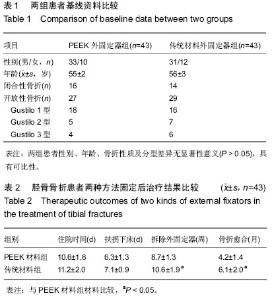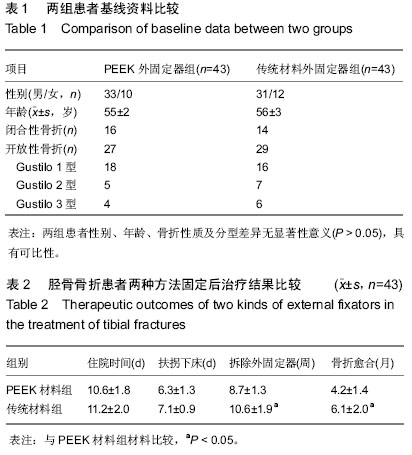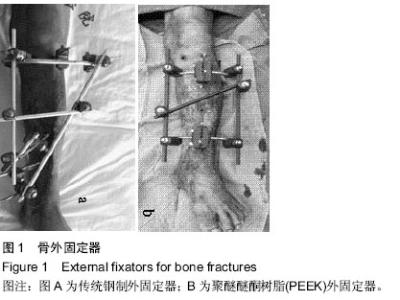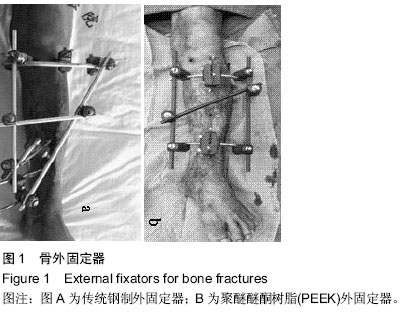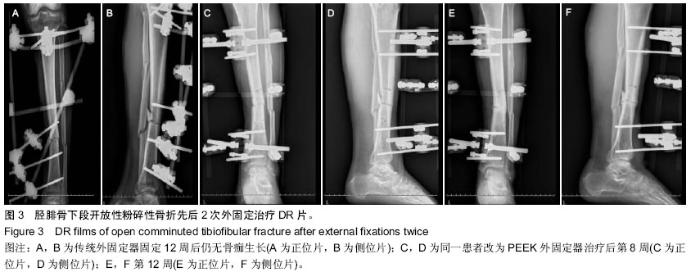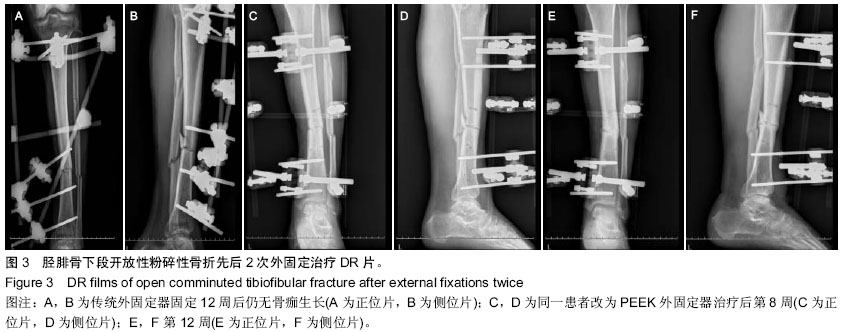| [1] Court-Brown CM,McBimie J,et al.The epidemiology of tibial fractures.J Bone Joint Surg Br.1995;77:417-421.
[2] Gustilo RB,et al.Current concepts in the management of open fractures. Instr Course Lect.1987;36:359-366.
[3] Crowley DJ,Kanakaris NK,Giannoudis PV.Debridement and wound closure of open fractures:the impact of the time factor on infection rates.Injury.2007;38(8):879-89.
[4] Crowley DJ, Kanakaris NK, Giannoudis PV.Irrigation of the wounds in open fractures. J Bone Joint Surg Br. 2007;89(5): 580-585.
[5] Gopal S,Majumder S,Batchelor AG,et al.fix and flap: the radical orthopaedic and plastic treatment of svere open fractures of the tibia. J Bone Joint Surg Br.2000;82(7):959-66.
[6] Patzakis MJ, Wikins J,Moore TM.Considerations in reducing the infection rate in open tibial fractures. Clin Orthop Relat Res.1983;178:36-41.
[7] Brumback RJ.Open tibial fractures:current orthopaedic management. Instr Course Lect.1992;41:101-17.
[8] Olson SA.Open fractures of the tibial shaft. Instr Course Lect;46:293-302.
[9] Court-Brown CM, Wheelwright EF,Christie J, McQueen MM.External fixation for type Ⅲ open tibial fractures. J Bone Joint Surg Br.1990;72:801-804.
[10] Gustilo RB,Merkow RL,Templeman D.The management of open fractures.J Bone Joint Surg Am.1990;72:299-304.
[11] Baidya KP, Ramakrishna S, Rahman M,et al. Quantitative radiographic analysis of fiber reinforced polymer composites. J Biomater Appl. 2001;15:279-289.
[12] Akay M, Aslan N. An estimation of fatigue life for a carbon fibre/poly ether ketone hip joint prosthesis. Proc Inst Mech Eng.1995;209:93-103.
[13] Skinner HB. Composite technology for total hip arthroplasty. Clin Orthop Relat Res.1998;235:224-226.
[14] 刘志雄.常用骨科分类法和功能评定[M].北京:北京科学技术出版社,2010:296-297.
[15] Johner R,Wruhs O.Classsification of tibial shaft fractures and correlation with result safter rigid internal fixation.Clin Orthop Relat Res.1983;178:7-25.
[16] Alemdaroglu KB,Tiftikci U,Iltar S, et al.Factors affecting the fracture healing in treatment of tibial shaft fractures with circular external fixator.Injury.2009;40:1151-1156.
[17] Gold SM,Wasserman R. Preliminary results of tibial bone transports with pulsed low intensity ultrasound. J Orthop Trauma.2005;19:10-16.
[18] Deng Z,Cai L, Jin W,et al.One-stage reconstruction with open bone grafting and vacuum assisted closure fot infected tibial non-union. Arch Med Sci.2014;10:764-72.
[19] Bhandari M, Guyatt GH, Swiontkowski MF, et al.Swiontkowski MF, Schemitsch EH. Treatment of open fractures of the shaft of the tibia. J Bone Joint Surg Br. 2001;83:62-68.
[20] Einhorn TA. The cell and molecular biology of fracture healing. Clin Orthop Relat Res. 1998;355:S7-21.
[21] Sultan S,Shah AA.Management of open tibial fractures at Ayub Teaching Hospital.J Ayub Med Coll Abbottabad.2001;13: 22-23
[22] Kurtz SM, Devine JN. PEEK biomaterials in trauma, orthopedic, and spinal implants. Biomaterials.2007;28: 4845-4869.
[23] Walter J, Kuhn SA, Reichart R,et al. PEEK cages as a potential alternative in the treatment of cervical spondylodiscitis:a preliminary report on a patient series. Eur Spine J. 2010;19:1004-1009.
[24] Qiu GX.The recent advances in the treatment of long bone fractures of the limbs. Traumatic Orthopedic J,2004; 6:8-11
[25] Karnezis IA,Miles AW,Cunningham JI,et al.Axial preload in external fixator half-pins:a preliminary mechanical study of an experimental bone anchorage system.Clin Biomech Bristol Avon.1999;14(1):69-73.
[26] TAN Jun-feng, LIU Yang,PENG Hao, et al. Biomechanical study of two kinds of external fixation in the treatment of tibial fracture. Biomedical Engineering and Clinical Medicine.2013; 17(5):420-424.
李起鸿.骨外固定原理与临床应用[M].成都:四川科学技术出版社,1992:72-73. |
